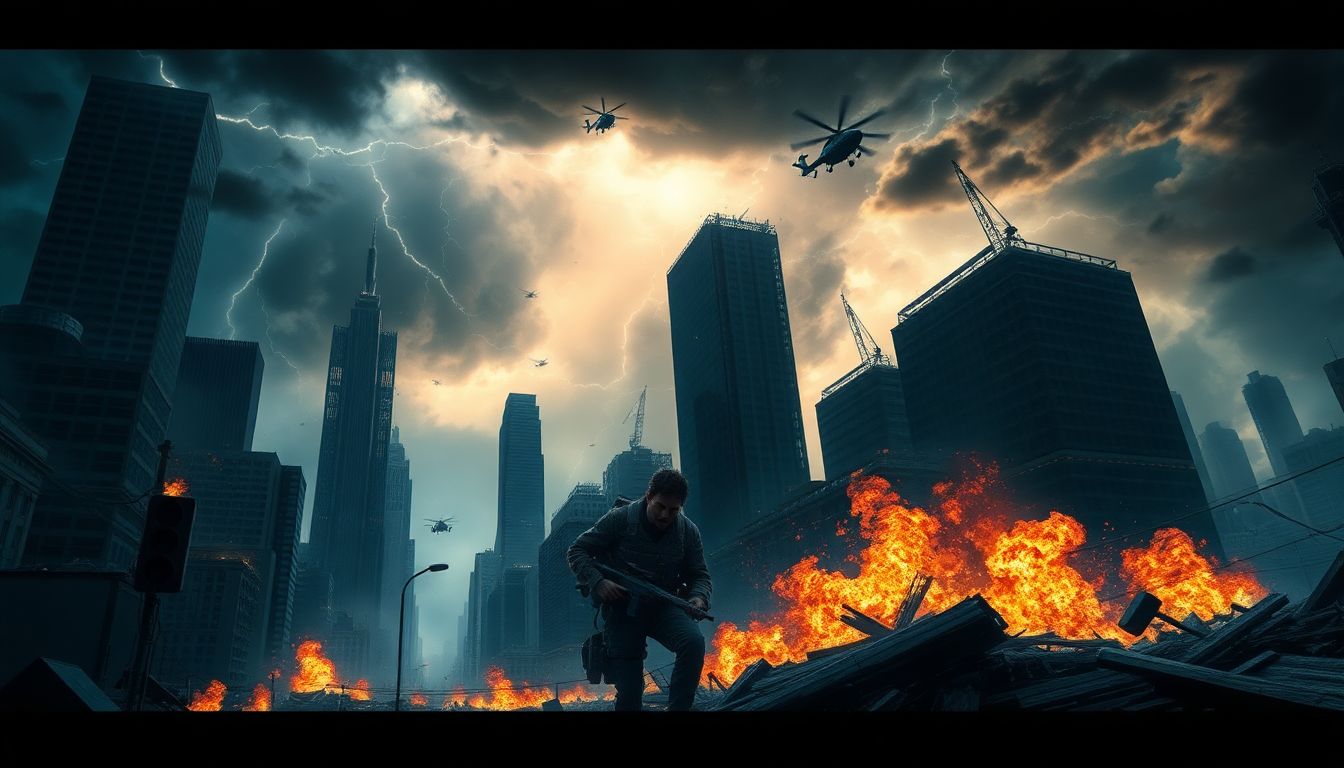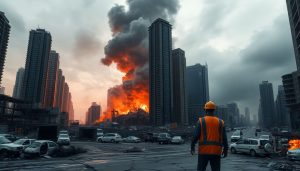Introduction
Disaster films are very attention-grabbing. But why? After all, who wouldn’t like to hear a story about the world ending or a major catastrophe? Fear and curiosity drive more than a few people to ask the nagging question: what if it really came true? Over the years, disaster films have evolved into one of the most popularly enjoyed genres in Hollywood, progressing from simple thrill rides to films that reflect real societal concerns. The article discusses the history, types, cultural impact, and most important lessons learned through disaster films: the things that end up meaning more than entertainment.
History and Evolution of Disaster Movies
Origins of Disaster Films
The earliest disaster movies were about “The Big Wave” in 1937, which conveyed the tumult of the oceans. The 1970s were marked with films like “Airport,” which shifted focus to airplane crashes, particularly in the collision of drama with catastrophe. Most of those early movies were fun to watch, but scary in essence: they depicted what real humans were afraid of, such as the Cold War or climate concerns.
Main Milestones and Trends
The lion’s share of blockbuster disaster movies came in the 1990s and early 2000s. “Titanic” shocked audiences through the true tragedy of ingredients in the romantic mishmash. The same resulted from “Dante’s Peak,” which had audiences bitten by the volcanic eruptions. Then the famous “The Day After Tomorrow” came along, broadcasting worries over climate change and global warming. Thanks to these digital effects, the filmmakers were offered the first time the ability to make humongous, realistic disasters that seemed very real.
Outstanding Movies and Their Result
The likes of “San Andreas” and “2012” didn’t keep disaster movies old. They used the latest CGI technology to put forth high waves and tumbling buildings to throw us into the evil world—they also changed the way that Hollywood makes films—more spectacular, more intense, and more special effects to make disaster movies huge event films.
Types of Disaster Movies and Their Features
Natural Disasters
These are events where nature alone has its say in cause-generating phenomena. They range from earthquakes to tsunamis to hurricanes to wildfires. Characters are mostly into stories where they try to sustain themselves while saving a loved one. Such films remind us how vulnerable nature’s power can make one and the importance of preparedness.
Technological and Man-Made Disasters
This is man-made or humanly orchestrated disasters. Nuclear meltdown and pandemic are good examples. It is shown in movies like “Contagion” and “Chernobyl” how these mistakes or malicious acts can lead to a lot of havoc. It makes us think about society depending too much on complicated systems that are susceptible to failure under stress.
Apocalyptic and Post-Apocalyptic
This category describes the world after a disaster. Movies like “Mad Max” and “The Road” show what life is when there is a collapse of a society. It dwells on the human spirit at times when people collapse to hope and how they could unite—or fight—everything falling apart around them.
Combining Disaster and Action: Crossover Cinema
The movies combine numerous disaster types or intersperse action or sci-fi horror with them. These mix genres have increased the complexity of stories and kept the audiences guessing. For example, a film titled “World War Z” is based on a pandemic-themed zombie horror genre; an exceptionally interesting combination of scary and survival perspectives.
Cultural and Societal Impact of Disaster Movies
Reflection of Societal Fear and Anxiety
While disaster movies represent what is in the greatest fear of the society, shows on climate change, pandemics, or threats from nuclear proliferation fit real fears. These films—and experts say—serve as storage houses for fears in safe spaces. Melting ice caps or collapsing cities depicted in disaster movies pull current issues into home theaters.
Awareness Creation and Education
Some disaster movies are quite good at teaching safety. For example, they indicate what one should do during an earthquake or a fire. After movies like “San Andreas,” many viewers have learned how to prepare for an earthquake by instituting proper drills and emergency plans. Such movies generate historical conversations on being prepared for the worst, which sometimes can save lives during real crises.
Policy and Response Influences
Disaster movies shape the public perception of emergency services. They portray what heroes do battle against natural threats and expose viewers to real-life rescue teams. Such films also sometimes shape policy—such as new building codes or disaster response strategies—by demonstrating what is likely to happen when precautions are not taken.
Behind the Scenes: Disaster Movies Production
Special Effects and CGI
It is difficult from a technical standpoint to create disaster scenes with a human touch. Artists and filmmakers are highly skilled at using CGI to convincingly blow up buildings or flood cities. Industrial Light and Magic lead in this area, blending CGI with live-action to make scenes believable. In actuality, this technology breathes life into terror for audiences.
Cast and Crew Insights
Disaster shooting is not easy at all. Usually, simulated environments or green screens are the setups used by actors to perform. Sometimes, safety is a concern with there being a great deal of danger in performing a big stunt or explosion. Directors collaborate with scientists, engineers, and safety personnel to keep everything looking real while safe during the filming.
Filming and Set Design Locations
There is nothing more credible than authentic sets. There are many movies that will travel to the actual site of disaster, or even closer simulate the environment to take things into the minds of the audiences as if such things were really made from the lifetime experience drawn into the story.
What to Learn from Disaster Films
Preparing for Actual Disasters
Practical safety tips can come from movies. Stock up on emergency kits, evacuation plans, and local risk education. It is also a way to prepare the viewer by seeing how characters escape floods or fire that triggers the thought to have one’s escape route in place.
Power of Story-Telling within Crisis
Best stories compel one to care about their characters trapped within disaster. It is how they find hope and strength when everything else is broken down. It is a power that filmmakers could use to inspire resilience and empathy during hard times.
Future Trends in Disaster Cinema
Eco-centered disasters seem to be on the rise. Stories of climate change, sea-level rise, and storms are gaining ground in cinema. Once technology catches up to a point where it could allow an experience of real-life disasters via augmented or virtual reality, the effects presented in cinematic scenes will hit harder and deeper.
Conclusion
Disaster flicks are more than just entertainment; they are manifestations of our fear, awareness-sowing instruments, and a means to hone one particular lesson: safety. Bombastic visuals coupled with tragic undertones show us life can be fragile, yet we can build strength within us to try and survive. What these films will teach us about preparedness and resilience goes a long way. Maybe next time you enjoy a disaster flick, consider what it will give you about the real world. Stay aware; stay prepared. And always remember the lessons lurking within mayhem.




